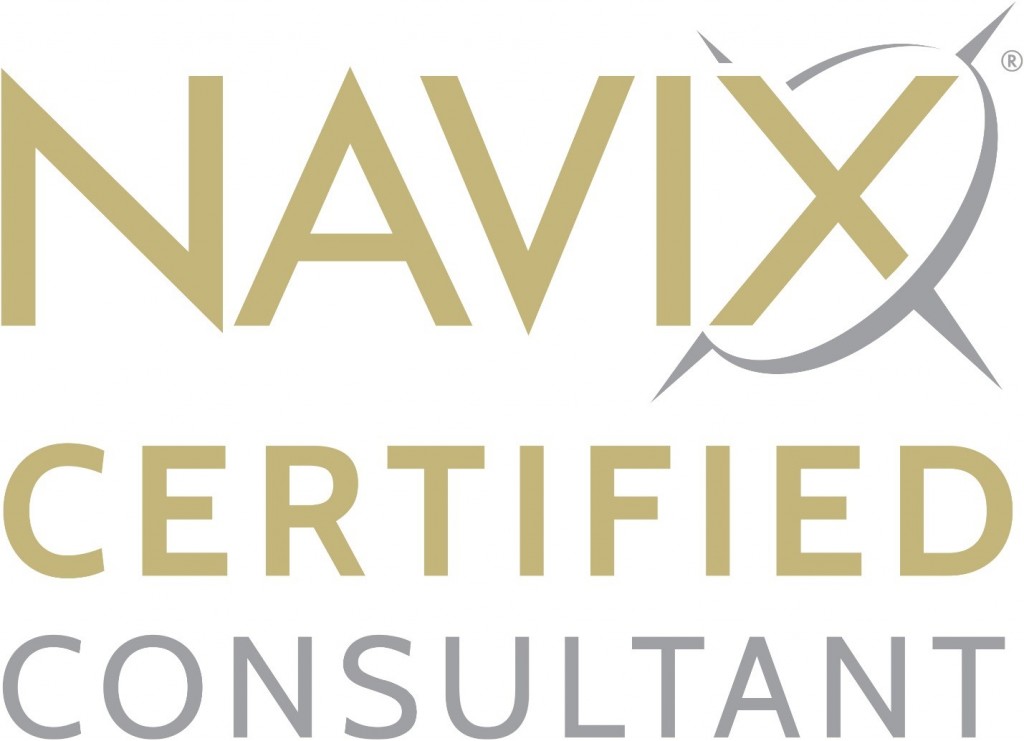
Posts Tagged "Business Exit Strategy"
Knock Knock!…How to Know if the Potential Buyer at Your Door is a Waste of Time or the Opportunity of a Lifetime
About this Webinar
June 22, 2021, 2:00 pm Eastern
Abstract:
In today’s hot market, many business owners are being approached by potential buyers about acquiring their company. If that’s you, then reserve your spot for this educational webinar to learn how to:
- Recognize if that potential buyer is serious, or if you should stay away
- Evaluate the situation quickly, effectively and in the safest way (especially if the inquiry comes from a competitor)
- Respond if the potential buyer is the real deal
- Sell your company without the cost and risks of a full sale process
Register Now for this Complimentary Webinar

Contact Tim 772-221-4499, to discuss strategies for your business.
True Grit- Webinar
True Grit – The Brave Story of How Two Business Owners Executed A Complicated Exit During the Pandemic
Webinar May 25, 2021 2pm-3pm EDT
Enjoy a conversation with real life business owners, Mike Rowlett and Matt Oldroyd, of Womack Machine Supply located in Dallas, Texas. They will discuss how they were able to:
- Secure capital for future growth
- Partially cash out of the company without giving up control
- Manage and reduce the risks
All of which was accomplished in the midst of a global pandemic.
Mike and Matt will tell us all the things they wish they had done differently (as well as some of the things that they did well.)
What you’ll learn:
- Does every deal really “die three deaths prior to closing?”
- What the stress of selling a company looks like
- Actions to take now if you not selling anytime soon.
Register Now

Contact Tim 772-221-4499, to discuss strategies for your business.
The Biden Tax Plan – What to Know Before Selling Your Company
2021 CEO Summit (Virtual)

What do the US elections and the global pandemic mean for the economy, your company and your wealth in 2021? Register for free to join NAVIX founder and CEO Patrick Ungashick, as he and a panel of experts present their insights, followed by a keynote presentation by Brian Beaulieu, Chief Economist of ITR Economics. For the first time in its more than 15 years, the annual CEO Summit will be held virtually. Registration is complimentary as our guest.
When: Wednesday, February 3, 2021 from 1:00pm to 3:00pm EST
Topics covered will include:
- Strategies for your business in 2021
- Potential tax reform
- M&A markets & company valuation updates
- PPP loans and impact
- Exit strategies
Space is limited, so please register today. Registrants will receive a Video Link to this private virtual event.
Register Now
Contact Tim 772-221-4499, to discuss strategies for your business.
Yes! Alternatives to Selling to a Competitor or Private Equity

Perhaps the two biggest myths about selling your company are:
- Your buyer must be a competitor or a private equity firm, and
- When you sell, you must give up control.
Thankfully, neither myth is true.
This educational webinar presents an alternative strategy to achieve the goals that most business owners seek: maximizing personal wealth, maintaining control until you wish to exit, and setting up the company for long-term success.
Register and attend this webinar to learn:
- When it may be right to sell your company to a competitor or private equity group, and when it may be the wrong decision
- How to get cash out of your company without giving up control
- How to position the company for long-term growth and success
Register Now
Contact Tim 772-221-4499, to discuss strategies for your business.
Maximizing Company Value: Tracking EBITDA During COVID
By: Patrick Ungashick

If your exit strategy is to sell your company one day for the maximum value (perhaps as soon as possible once the COVID-19 recession is over?), then it is essential to track your company’s EBITDA accurately. (Read our previous article about EBITDA and how it directly impacts your company’s valuation at the sale.) However, the COVID-19 pandemic and economic recession have significantly altered many companies’ financial results and condition. The virus is causing many companies to experience “abnormal” changes to revenue, costs, margins, labor, debt, and other financial and operational factors. Many companies are experiencing negative changes such as lost revenue and profits due to the virus’ impact, while others are experiencing positive demand for their products and services. Either way, the virus is altering many company’s financial results, which means adjusting the EBITDA. Some of the changes are temporary (non-recurring) and expected to revert to pre-COVID-19 conditions at some point in the future. Other changes may be more permanent.
When you decide to sell your company, it will be crucial to have accurately tracked your EBITDA and its changes through these unusual and unprecedented times. Potential buyers will want to know how COVID-19 impacted your company’s financial performance. They will also want to be able to clearly and readily convert your company’s financial results to show how the company likely would have performed during normal operations and market conditions. Because buyers typically ask for five years of historical financial reports, it is essential to track EBITDA now whether you aspire to sell your company quickly or anytime within the next five or so years.
There are many ways COVID and the recession may be creating unusual changes within your company’s financial results. Below are some of the more common issues that you and your management team may need to address:
1.Temporary Increases / Decreases to Revenue or Profits
Due to COVID-19, some companies may see a surge in demand for their products leading to an increase in revenue and profits. Examples might include companies dealing with products or services in the following areas: medical and health, cleaning and sanitary, home entertainment, transportation, and delivery services, and other industries. Conversely, other companies may be experiencing a reduction in the demand for their products or services, leading to lost revenue and profits. Examples include markets such as hospitality and leisure, travel, luxury goods or services, and others. In these situations, you and your team should monitor demand, revenue, and profits to identify how much, of the lost or increased volume, relates to the current conditions and is not expected to continue after the virus and recession have passed.
2.Business Facility Disruption
Many companies were forced to close facilities such as offices, manufacturing plans, distribution centers, etc. due to COVID-19. These disruptions likely result in lost EBITDA. Owners and their management teams should, track any business disruptions and document the duration and root causes, to facilitate analysis of the company’s financial results for the periods before and after the relevant shutdown. Additionally, track operating expenses that were reduced or not incurred when determining the normalized EBITDA.
3.Expenses to Support Remote Work
Many businesses incur increased expenses associated with the shift of workforces from company facilities to work-from-home (WFH) routines. Examples of these costs include improved information technology (IT) expenses and equipping employees with additional computers and other equipment and supplies to support remote work. Owners and their teams should identify and track these expenses and purchases to support remote working. Also, track any positions likely to remain WFH going forward.
4.Reduced Employee Compensation and/or Headcount
Many companies severely impacted by COVID-19, and the current recession have reduced employee compensation, and/or reduced employee headcount through lay-offs or furloughs. Owners and their teams should track employee compensation and headcount pre-COVID-19 and post-COVID-19. Also, consider any costs associated with severance payments and other employee termination costs. Use this information to normalize the company’s EBITDA for the period.
5.Increased Bad Debt Expense
Many companies are experiencing an increase in aged accounts receivable (A/R) as customers delay payment due to the virus and recession. Also, other companies may be experiencing increases in bad debt expense resulting from customer bankruptcies. Business owners and their management teams should closely monitor A/R aging and collections to stay in front of any potential issues with customer payments.
Careful consideration should be given to modeling future customer revenue for specific lost customers and plans to recapture lost revenue by channel/geography.
6.Stretching Payments to Vendors
In an effort to conserve cash, many companies are stretching payments to vendors, landlords, leaseholders, etc. This practice leads to increases in aged accounts payable (A/P) and higher A/P balances. In some situations, stretching payments can result in lost early pay discounts if previously available and utilized. Carefully monitor the business’s payables, consider normalizing higher than usual A/P balances and significantly aged payables, and impact to EBITDA.
7.Government Loan and Bailout Programs
Since the COVID-19 crisis first hit, many companies have taken advantage of various government loan and bailout programs which are not normally utilized in the regular course business. The most widely used program among small to mid-market companies has been the Paycheck Protection Program or PPP. These programs invariably have stipulations such as retaining certain levels of employees and their compensation, and other expense management requirements. Business owners and management teams must consider and normalize the impact of any loan or bailout programs on the company’s earnings and consider normalizing the impact.
The seven items listed above represent only some of the more common issues that companies may be experiencing due to COVID-19, which alter EBITDA. There are many additional issues to monitor and track, such as changes to the company’s: pricing of its products and services, discretionary expenses, cash management practices, business development operations and results, employee attendance, and absenteeism. Ultimately, owners and management teams need to study and accurately track the company’s EBITDA and other financial results during these unusual times. Staying on top of these issues is essential not only for the effective leadership of the company but also for correctly positioning the company for sale when that day comes.
Contact Tim 772-221-4499, to discuss your specific EBITDA questions or your overall exit plans. If you intend to sell your company as your exit strategy, consider registering for our webinar “Eager to Sell Your Company when the Market Returns?” . During this webinar, we will discuss the steps that business owners need to take now, to position the company for sale and maximize value when market conditions return to favorable.
Eager to Sell Your Company When the Market Returns?
Contact Tim 772-221-4499, to discuss strategies for your business.
Eight Tactics to Escape the Dark Side of Owner Dependency
By: Patrick Ungashick

In one of the Star Wars movie’s pivotal scenes, Darth Vader attempted to lure his son Luke Skywalker to the dark side of the Force, warning “You don’t know the power of the dark side.” Luke’s skill and talent with the Force made vulnerable to the dark side, and thus the target of his nefarious father’s attention.
There is a powerful lesson here for business owners like you. Your skills and talents may come back to haunt you when you ultimately try to exit from your businesses. Within many companies, the owner is the most valuable and vital employee. Your knowledge, relationships, and vision are what drives the business. Undoubtedly you have help—no CEO/owner build a sustainable business by himself or herself. However, for years or even decades, much of your company growth has mostly been due to your personal presence and efforts. Then, one day, you wish to exit. If at that time you remain an essential employee, you may be unable to achieve commonly held exit goals: financial freedom, a sustained business legacy, and an exit on your own terms. You may find yourself in the dark side, trapped inside the company.
To overcome this, owners must build businesses that are not dependent on them. You must create a business that has the leadership, resources, and plan not merely to survive a transition, but to thrive after you have exited. Reducing owner dependency is, like resisting the dark side’s temptations, easier said than done. Most owners enjoy what they do, and understandably do not wish to become irrelevant within their own companies. Additionally, the company is accustomed to tapping the owner’s talents and skills to the fullest. Yet, as you move closer to exit, owner dependency, if left unaddressed, becomes a serious obstacle to exit success.
Listed below are eight tactics to reduce dependency between now and your future exit.
1.Build a leadership (and/or management) team that can handle day to day operations without you. Ideally, the team can run the company for at least thirty days’ normal operations without your involvement.
2.Collaborate with your leadership to devise and follow a written business growth plan for the next two to three years. Meet periodically during the year to measure performance against the plan’s waypoints and address any lagging results.
3.Conduct leadership team meetings according to a set published schedule. Make sure meetings are run effectively and occur even when you are absent. Meetings should lead to clearly defined and documented decisions.
4.Ensure that the leadership team members have current, written job descriptions and that their job performance is measured against clearly defined and tracked benchmarks.
5.Create a business development team and systems that perform effectively, all the way from lead generation to closing the sale, without your involvement.
6.Verify that your normal daily/weekly duties are either not essential to the business or could be readily filled by other employees cross-trained in those areas.
7.Brief the company’s top employee leaders on your exit goals. These employees must be sufficiently trustworthy for you to share your exit goals in confidence with them. In return, you must create the win-win for them. This can be accomplished using specialized compensation plans to incentivize top leaders to build company value and stay with the organization up to and beyond your exit.
8.Avoid meeting alone with important external relationships, such as customers, prospects, vendors, and lenders. It sends a message that you are the company. If you must participate in these meetings, delegate as much of the conversation as possible to others from your team.
Maximizing Business Value
Creating a company that can survive and thrives without you typically takes several years of focused effort; another reason why preparing for exit must begin no later than five years prior to your intended exit age. The good news is that a company that can operate independently of you is usually a more valuable business if you intend to sell, and a more stable business if you want to exit by way of turning it over to family or employees.
To help, download our popular free ebook: Your Last Five Years: How the Final 60 Months Will Make or Break Your Exit Success. Then, contacts us to schedule a free phone conversation to learn how we have helped hundreds of business owners plan for and achieve a happy exit.
If you have a quick question coming out of this article or, if you want to discuss your situation in more detail, we can set up a confidential and complimentary phone consultation at your convenience contact Tim 772-221-4499,

The One Exit Tactic You’ve Probably Never Heard Of
By: Patrick Ungashick

Selling your company to a strategic buyer…Private equity…ESOPs…IPOs…There seems to be a dizzying list of different ways to exit from your company. You have likely heard of most of them, and perhaps you are considering one versus another. Yet there might be one undervalued exit tactic that you have not heard of and need to know about. It is called a “non-control recap” in short vernacular (recap is an abbreviation of recapitalization). Here’s how it works and why it may help achieve your exit goals.
What is a Non-Control Recap?
Simply put, a non-control recap is selling a minority interest (non-controlling) portion of your company to an investor (recapitalization). Historically for mature companies, non-control investors were largely private equity groups (PEGs), but family offices are an emerging player in this market. Non-control recaps are an alternative to a full sale of the company, although a full sale can still be pursued at a later date.
Why Consider a Non-Control Recap?
This exit tactic offers business owners a number of important advantages, particularly in comparison to selling the entire company. If you are your company’s sole owner, you can gain significant liquidity by taking home cash from the partial sale while continuing as a partial owner and leader of the company. You can reduce personal risk, as you diversify your net worth by gaining cash and potentially reducing or eliminating personal guarantees with an additional equity partner involved. Non-control investors prefer a passive role in the company, leaving you in control of day to day operations and decisions. With the right investor, you gain a valuable strategic ally in growing the company. Non-control investors may bring strategic opportunities to the company that were previously not available, such as opening new markets, introductions to prospective clients, or perhaps identifying and assisting with acquisitions for growth. Non-control investors typically require minority representation on your board, bringing experienced leaders to assist the company to its next level of growth. Finally, you can remain the majority owner of the company until a later date, at which point you may choose to sell the entire company at your full and final exit, gaining another round of personal liquidity.
What If You Have Partners?
If you are not the company’s sole owner but have partners, the advantages of a non-control recap include all of the above, plus flexibility to customize the investment to the needs of individual co-owners. The level of liquidity can be tailored such that each co-owner can decide to sell some to all of his or her interest. The ongoing roles can be customized for each owner as well, permitting some to leave at closing and others to continue working in the company. A non-control recap can also be the vehicle for key management to own a portion of the company going forward, as a retention and incentivization strategy and/or as a stepping stone toward a future full sale of the company to the next generation of employee-owners.
Is There a Catch?
Non-control recaps are not for every owner or every company. Investors look for companies that are profitable, offer strong growth potential, and have capable leadership. While a minority investor remains hands-off mainly in the day to day operations, non-control investors will require supermajority rights on issues like selling the entire company or raising additional capital or debt. Another point to consider: the non-control sale may receive a lower valuation multiple than what might be achieved with a full sale, reflecting the investor’s minority position. However, this potential disadvantage is offset with the opportunity to pocket some liquidity now and retain ownership for the full sale at a later date–hopefully at a higher total valuation after having grown the company to the next level.
Non-control recaps may not be the right tool for every business owner, but they offer compelling advantages that should be considered prior to deciding to sell the entire company. To learn more, review our webinar on this topic called “Cashing Out Without Walking Out” or contact us to discuss your individual situation.
Interesting Items
How to Avoid Getting Burned by Earn-Outs When Selling Your Company
By: Patrick Ungashick

The term “earn-out” usually sends a shiver down the spine of business owners. And for a good reason. Business owners seeking to sell their business at exit overwhelmingly prefer all-cash deals. Owners know that any portion of the purchase price held back at closing is at risk—you might never see those dollars. Despite owners’ overwhelming preference, most deals are not 100% cash transactions, but instead, include any number of mechanisms that pay additional dollars to the seller after closing only upon achieving certain results. One of the most common mechanisms is an earn-out. Here’s why owners seek to avoid earn-outs, and how to avoid getting burned by them if part of your deal.
Selling Your Company
First, a quick explanation of earn-outs. An earn-out is a provision defining how a selling owner may receive additional payments after closing, contingent upon specific results such as stipulated financial performance or milestones. Earn-outs are used to bridge valuation gaps between the seller and buyer. In essence, with an earn-out, the buyer is saying to the seller, “We will pay you more for your company later if you actually go out and achieve [blank]…”
Here’s an example. You believe your company is worth $15 million, in part because you trust the company will continue to grow 25% per year like it has the last few years. Your buyer is not convinced that the growth rate is sustainable and is only willing to pay $10 million at closing. To bridge the gap, your buyer agrees to an earn-out that may pay you up to an additional $5 million after closing if the company sustains the 25% (or better) growth rate over the next several years.
Earn-outs can be useful in bridging value gaps, and some deals might never be closed without incorporating an earn-out into the agreement. However, an earn-out often trades one problem (i.e. the buyer and seller do not agree on the price) for another set of problems:
- You and your buyer have to agree on the specific performance or milestones needed to receive earn-out payments. For obvious reasons, buyers prefer to tie earn-outs to the bottom line. Sellers, however, beware. After you have sold the company (or a portion of it), you probably are in control of very few factors that determine the bottom line. Sellers should seek to tie the earn-out to top-line results, as they are easiest to measure and hardest to manipulate.
- If you have an earn-out tied to financial metrics somewhere below the top line, you and the buyer must agree on key definitions and how those metrics will be calculated. It’s not enough to tie an earn-out to “net profits” without defining what goes into net profits, and what does not. The issue is more complicated than just agreeing on the meaning of certain words and phrases. After purchasing your company, the buyer may allocate some of its overhead and liabilities onto your company’s financial results. This could be a nasty surprise if you and the buyer did not precisely define net profits during the sale negotiation.
- Regardless of which metrics the earn-out is tied to, as the selling owner, you are still at risk if the buyer mismanages (unintentionally or intentionally) the company’s operations after the sale, undermining or outright killing any chance of hitting the earn-out targets. For example, assume you have an earn-out tied to top-line results. Using top-line revenue seems simple and clear. But the new owner can take any number of actions that make it hard or impossible to achieve the top line milestones: What if newly hired leaders are not competent? What if the new owner raises prices, ultimately decreasing sales or even losing customers? What if the new owner raids the company and redeploys some of your best salespeople to another department? What if the new owner changes the company name and, in doing so, disrupts marketing and lead generation? You, the selling owner, bear the risk of any decisions or actions that negatively impact company performance to the point that you do not hit your earn-out targets.
- You and your buyer have to agree on additional important terms and definitions, such as: How long will the earn-out last? Is there a cap on the potential payments? Can the missed earn-out installments be recovered if the company later catches up? Can the buyer offset indemnification claims against earn-out payments? These are only some of the critical issues that must be addressed and negotiated.
Maximizing Cash at Sale
Owners seeking to one day sell the company at exit must build a company that is so attractive to potential buyers that they will offer all-cash terms. Earn-outs at their core are a mechanism for buyers to limit risk: risk that the company will not perform as desired after sale; risk that existing customers will leave or decrease their volume; risk that top employees will flee, etc. Building a business that sells for all-cash terms involves more than just growing revenues and profits. To avoid earn-outs altogether, you must hire and align a quality leadership team, eliminate your involvement in routine sales and operations, achieve a strong track record of growth, reduce customer concentration, and have effective financial systems and processes. Building a business that is robust in these areas reduces buyers’ risk to the point that buyers do not see any need for an earn-out.

The second step to avoid getting burned by an earn-out is to hire and work with an experienced exit advisory team. Your accountant, lawyer, investment banker, and exit planner must have extensive experience with situations like yours and be qualified to give you sound advice. Your investment banker and lawyer, in particular, will be your A-team in negotiating the deal terms, especially any earn-out, and protecting your interests. Do not use general purpose advisors when selling your company. You carry the risk that any fees that you might save will be paid back multiple times over in future costs and losses.
At NAVIX, our clients are prepared to potentially sell their business for all-cash deals and have advisory teams qualified to help avoid the fallout caused by an ill-negotiated earn-out.
To learn more about how to prepare your company to sell for 100% cash, contact Tim to schedule a complimentary, confidential consultation 772-221-4499

17 Signs You Might Need a ‘Partnerectomy’
By: Patrick Ungashick

Webster’s Dictionary defines a “partnerectomy” as “the procedure to remove a diseased or failing business co-owner.” Well, OK, that’s not true — it is a word that we made up. But sometimes partnerships need to come to an end. Here are the symptoms to watch for to determine if you have a business partner who needs to go.
Business Partnerships
According to our proprietary research, about seven out of 10 U.S. companies have more than one owner. These partnerships feature two or more leaders coming together with the shared goal of growing the company. Their combined effort and often complementary skills fuel the company’s growth and success. That’s the positive version of the story — and it is often true, especially in the beginning. However, sometimes business partners realize they may not be exactly on the same page on multiple issues. Sometimes it’s possible to reconcile their differences and resume a productive relationship. Other times, the necessary and perhaps the only course of action is to remove the partner in question. In other words, the company needs a partnerectomy.
Some partnerectomies are more difficult than others. Some are painful, angry, risky, expensive, and cause lasting scar tissue. Others are more controlled, safer, less emotional, and leave the organization much stronger than it was before the procedure. Either way, before resorting to this invasive and irrevocable course of action, business co-owners should exhaust every effort and resource to find another resolution to their core differences.
Reasons to Buy Out Your Business Partner
Here are the symptoms that indicate your organization may need a partnerectomy, any of which suggests that it’s time to take action. You may need a partnerectomy if:
1.You and your partner(s) disagree about where to take the company and how to get there.
2.One or more partner(s) want to take all of the company profits home while one or more partner(s) want to reinvest all of the profits back into the company for growth.
3.You believe that there are important topics that you cannot discuss with your partner(s) for fear of damaging the relationship.
4.Deep down, you are not sure that you can trust your business partner(s).
5.Deep down, if you could turn back the clock you would not enter into a partnership with that person(s) again.
6.Deep down, you believe that if that partner(s) were to leave the company, then employees, customers, suppliers, or other third parties would be relieved.
7.You and your partner(s) have very different timelines for when each wants to exit from the company.
8.You and your partner(s) have very different opinions about your company’s value.
9.You and your partner(s) have not signed a buy-sell agreement.
10.Your employees clearly prefer or are aligned with one partner or another, such that divisive factions exist in your organization.
11.Members of your leadership team are unclear what a particular partner actually does inside the company.
12.You believe that if that partner(s) departed from the company tomorrow, the company would not experience any setback or difficulties.
13.You find yourself frequently having to do any of the following for another partner(s): “cover for” him or her, do “damage control,” or “take precautionary steps” to ensure that the other partner does not cause the company problems, intentionally or not.
14.Your partner(s) has ongoing personal habits or issues that create a serious risk for the business.
15.You and your partner(s) do not have current, written, mutually agreed-upon job descriptions.
16.You and your partner(s) are working at different commitment and energy levels but take home the same pay.
17.You and your partner(s) are doing different jobs inside the company but take home the same pay.
It is worth noting that some of these symptoms set off obvious and immediate alarm bells, whereas others seem trivial or harmless. Yet, as the word symptom implies, each of these items may be a surface manifestation of a deeper root issue that, if left unaddressed, can lead to real catastrophe. If you are experiencing any of these symptoms, just like any true medical issue it is advisable to discuss your situation with a knowledgeable advisor, and if necessary, do “more tests.” Contact us to confidentially discuss your situation.
If you have a quick question coming out of this article or, if you want to discuss your situation in more detail, we can set up a confidential and complimentary phone consultation at your convenience contact Tim 772-221-4499

How to Avoid Getting Burned by Earn-Outs When Selling Your Company
By: Patrick Ungashick

The term “earn-out” usually sends a shiver down the spine of business owners. And for a good reason. Business owners seeking to sell their business at exit overwhelmingly prefer all-cash deals. Owners know that any portion of the purchase price held back at closing is at risk—you might never see those dollars. Despite owners’ overwhelming preference, most deals are not 100% cash transactions, but instead, include any number of mechanisms that pay additional dollars to the seller after closing only upon achieving certain results. One of the most common mechanisms is an earn-out. Here’s why owners seek to avoid earn-outs, and how to avoid getting burned by them if part of your deal.
Selling Your Company
First, a quick explanation of earn-outs. An earn-out is a provision defining how a selling owner may receive additional payments after closing, contingent upon specific results such as stipulated financial performance or milestones. Earn-outs are used to bridge valuation gaps between the seller and buyer. In essence, with an earn-out, the buyer is saying to the seller, “We will pay you more for your company later if you actually go out and achieve [blank]…”
Here’s an example. You believe your company is worth $15 million, in part because you trust the company will continue to grow 25% per year like it has the last few years. Your buyer is not convinced that the growth rate is sustainable and is only willing to pay $10 million at closing. To bridge the gap, your buyer agrees to an earn-out that may pay you up to an additional $5 million after closing if the company sustains the 25% (or better) growth rate over the next several years.
Earn-outs can be useful in bridging value gaps, and some deals might never be closed without incorporating an earn-out into the agreement. However, an earn-out often trades one problem (i.e. the buyer and seller do not agree on the price) for another set of problems:
- You and your buyer have to agree on the specific performance or milestones needed to receive earn-out payments. For obvious reasons, buyers prefer to tie earn-outs to the bottom line. Sellers, however, beware. After you have sold the company (or a portion of it), you probably are in control of very few factors that determine the bottom line. Sellers should seek to tie the earn-out to top-line results, as they are easiest to measure and hardest to manipulate.
- If you have an earn-out tied to financial metrics somewhere below the top line, you and the buyer must agree on key definitions and how those metrics will be calculated. It’s not enough to tie an earn-out to “net profits” without defining what goes into net profits, and what does not. The issue is more complicated than just agreeing on the meaning of certain words and phrases. After purchasing your company, the buyer may allocate some of its overhead and liabilities onto your company’s financial results. This could be a nasty surprise if you and the buyer did not precisely define net profits during the sale negotiation.
- Regardless of which metrics the earn-out is tied to, as the selling owner, you are still at risk if the buyer mismanages (unintentionally or intentionally) the company’s operations after the sale, undermining or outright killing any chance of hitting the earn-out targets. For example, assume you have an earn-out tied to top-line results. Using top-line revenue seems simple and clear. But the new owner can take any number of actions that make it hard or impossible to achieve the top line milestones: What if newly hired leaders are not competent? What if the new owner raises prices, ultimately decreasing sales or even losing customers? What if the new owner raids the company and redeploys some of your best salespeople to another department? What if the new owner changes the company name and, in doing so, disrupts marketing and lead generation? You, the selling owner, bear the risk of any decisions or actions that negatively impact company performance to the point that you do not hit your earn-out targets.
- You and your buyer have to agree on additional important terms and definitions, such as: How long will the earn-out last? Is there a cap on the potential payments? Can the missed earn-out installments be recovered if the company later catches up? Can the buyer offset indemnification claims against earn-out payments? These are only some of the critical issues that must be addressed and negotiated.
Maximizing Cash at Sale
Owners seeking to one day sell the company at exit must build a company that is so attractive to potential buyers that they will offer all-cash terms. Earn-outs at their core are a mechanism for buyers to limit risk: risk that the company will not perform as desired after sale; risk that existing customers will leave or decrease their volume; risk that top employees will flee, etc. Building a business that sells for all-cash terms involves more than just growing revenues and profits. To avoid earn-outs altogether, you must hire and align a quality leadership team, eliminate your involvement in routine sales and operations, achieve a strong track record of growth, reduce customer concentration, and have effective financial systems and processes. Building a business that is robust in these areas reduces buyers’ risk to the point that buyers do not see any need for an earn-out.

The second step to avoid getting burned by an earn-out is to hire and work with an experienced exit advisory team. Your accountant, lawyer, investment banker, and exit planner must have extensive experience with situations like yours and be qualified to give you sound advice. Your investment banker and lawyer, in particular, will be your A-team in negotiating the deal terms, especially any earn-out, and protecting your interests. Do not use general purpose advisors when selling your company. You carry the risk that any fees that you might save will be paid back multiple times over in future costs and losses.
At NAVIX, our clients are prepared to potentially sell their business for all-cash deals and have advisory teams qualified to help avoid the fallout caused by an ill-negotiated earn-out.
To learn more about how to prepare your company to sell for 100% cash, contact Tim to schedule a complimentary, confidential consultation 772-221-4499



 Tim is a Consultant to Business, Government and Not-for-Profits Organizations specializing in innovative and challenging ways for organizations to survive, to thrive and to build their teams.
Tim is a Consultant to Business, Government and Not-for-Profits Organizations specializing in innovative and challenging ways for organizations to survive, to thrive and to build their teams.